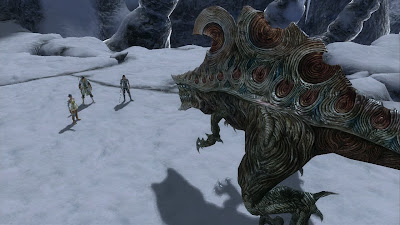Nintendo DS
Unless you’re running homebrew applications on your DS console (and you should, if only to re-experience old LucasArts gems through the magic of ScummVM), you may have felt the lack of point-and-click adventure games on anything resembling a current-gen console or handheld. With the same richly coloured and stylistic take on middle Europe that saw Dark Chronicle succeed, as well as by putting a charming spin on the puzzle genre, Professor Layton and the Curious Village steps in to save the day.
Along with his assistant Luke, Professor Layton is called to the village of St Mystere by a certain Lady Dahlia, widow of the late Baron Reinhold. Reinhold’s last will and testament had stated that his inheritance would be given to the person who found the mysterious Golden Apple, and it’s this treasure that Dahlia wants you to locate. Now, Professor Layton is apparently pretty famous (think Sherlock Holmes minus the opium addiction, and with the ubiquitous deerstalker replaced with a top hat), so everywhere you turn, you have to solve puzzles to prove you are who you claim to be. Initially you do this to get past the NPCs, who demand answers to puzzles they’ve been thinking about for weeks, but after half an hour in the game you’re actively searching out new puzzles to solve (there are 135 in total).
It is a little patronising, being refused access to certain areas of town or the use of a rowboat until you’ve proved that by moving only three coins you can invert a ten-coin pyramid, but these small road-blocking questions are what the game’s all about. The resulting small progressions in the plot are enough to keep your attention, and keep you playing, however.
Some of the mind-benders can be very difficult, but you can use hint tokens (a finite number of which can be found throughout the village) to buy tips on solving particular puzzles, up to a maximum of three hints per puzzle. Correctly solving puzzles wins you a certain number of points, called piccarats, but giving a wrong answer decreases the available piccarats for the puzzle.
Unlike puzzle titles in the Brain Age and Brain Training series, which only make the player better at player those specific games, Professor Layton has a much greater range of puzzles – including geometry, general maths, sliding tiles, common sense and trick questions. The DS’s touchscreen is perfect for almost all of the puzzles offered – character recognition is spot-on for maths puzzles and the stylus is well suited to sliding tiles and drawing efficient routes. Multiple-choice questions, of which there are quite a few, are neither here nor there; some are bewilderingly easy, others quite hard, while some simply rely on common sense (picking which chair is best suited for a multi-purpose town hall, for example). These questions don’t make much use of the hardware’s capabilities, but they’re at the crux of the game’s appeal – when all else fails, the simplest answer to any complex question is probably the right one. Occam’s razor, it seems, has found its home on the DS.
Visually, Professor Layton is a real treat – in-game cinematics, as well as the general style of the village, have definite shades (if not broad strokes) of The Triplets of Belleville’s quirky-yet-creepy animation. The game adds a rich sepia tint to almost everything in the village; colours are slightly muted, but jump out when the narrative needs to add a bit of drama. Similarly, characters are represented on-screen as two-dimensional animations, and the display flicks between speaking characters placed on top of meticulously painted backgrounds.
Navigating the village is very similarly handled to games like Myst, or even The Neverhood – moving around the streets by clicking on arrows, you move from static screen to static screen. It’s not boring, though – almost every time you move past the same street, there’s something different to do – a new villager will appear with a puzzle, or a previously inaccessible building will suddenly be opened up. These constant changes, and the many discrete puzzles, mean that the game’s great for casual gamers, although as the plot unfolds, the game becomes more and more difficult to put down.
Professor Layton does for puzzle games what Puzzle Quest did for three-in-a-row jewel swappers; it dresses up the core gameplay mechanics, wrapping it all in a beguiling plot and well thought-out setting. There are additional benefits for gamers with wi-fi connections; free puzzles are available to download each week, meaning that even when you’ve finished the story mode, you can keep your hand in while waiting for the sequel, Professor Layton and Pandora’s Box, as well as the as-yet-unannounced final chapter in the trilogy. It may be a long wait, but it’ll be well worth it.
[This review first appeared in Critic magazine.]







